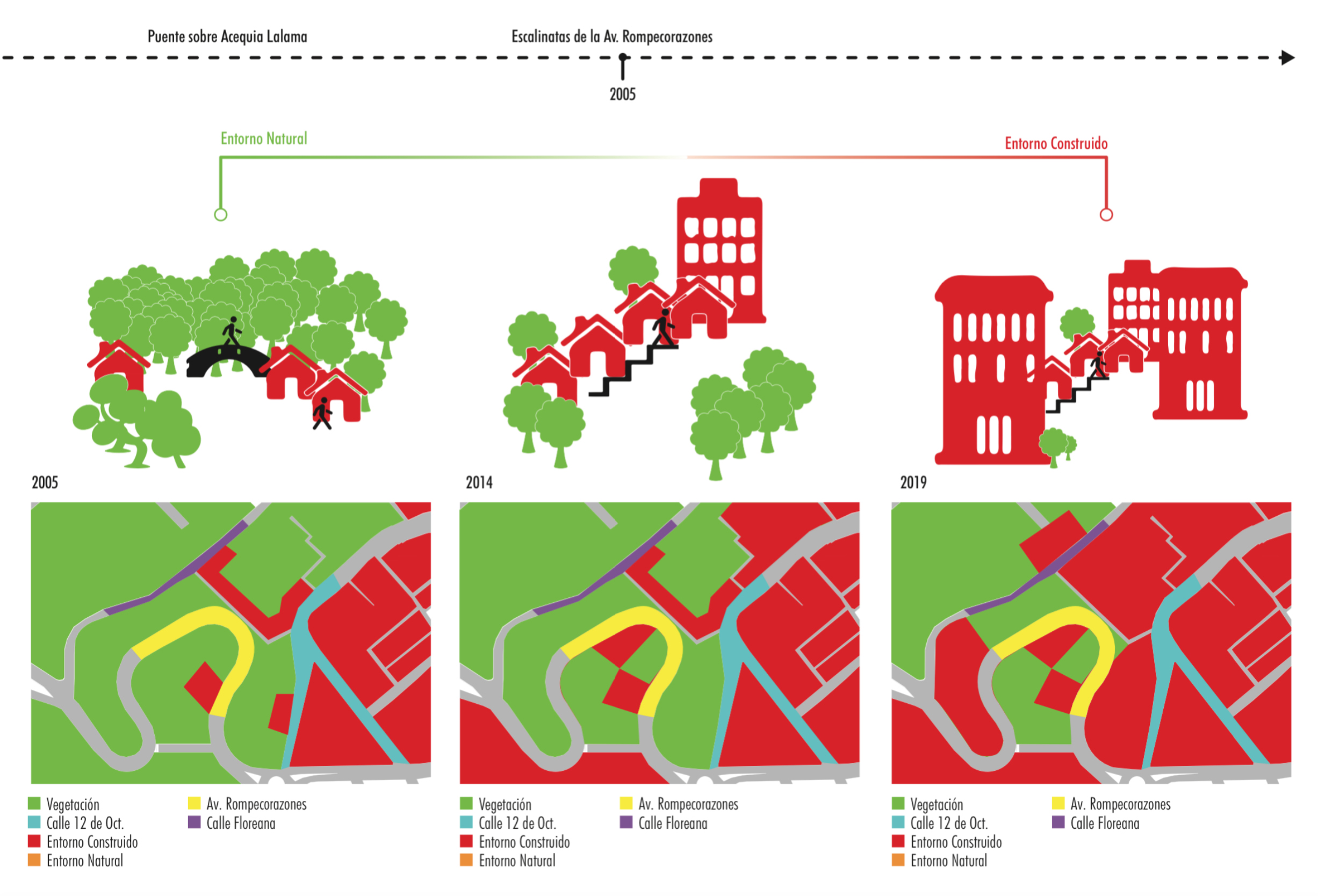Uses and disuses of public space: Consequences of a civilizing aesthetic
Keywords:
ideological discourse, public space, civilizing aesthetics, community perceptions, urban planningAbstract
This article is the result of an investigation carried out in La Matriz parish of the city of Ambato - Ecuador, which aims to reflect on the existing consequences in the uses and disused of public space from the implementation of a civilizational aesthetic in the planning of cities. It is based on the need to understand the divorce between the urban planning of municipal bodies and the imaginaries built in the communities around public spaces. The methodological approach consists of the application of an ethnography of community sense in eight public spaces to understand the historical community uses of the spaces, as well as the disused to which they have been subjected from works of urban transformation. The analysis allows us to reflect in a political key on the need to homogenize public space, and, therefore, understand public space as an instrument of the ideological discourse of capitalism.
Downloads
References
Alguacil, J. (2008). Espacio público y espacio político. La ciudad como el lugar para las estrategias de participación. Polis (Santiago), 7(20), 199-223. https://doi.org/10.4067/S0718-65682008000100011
ATLAS.ti Scientific Software Development GmbH. (2023). ATLAS.ti (Versión 23.0.7) [Software]. ATLAS.el. https://atlasti.com/es
Augé, M. (2004). Condiciones contemporaneas del diseño. No-lugares y espacio público. En P. Lipari, M. Santamaria y P. Molina (Coords.), Cuadernos de Diseño. Pensar y proyectar el futuro (No. 1, pp. 107–125). IED.
Augé, M. (1994). Los “No lugares”: espacios del anonimato. Una antropología de la sobremodernidad [2 ed.]. Gedisa.
Bauman, Z. (2009). Vida de consumo. FCE.
Bonsiepe, G. (2012). Diseño y crisis. Campgràfic.
Borja, J. y Muxí, Z. (2003). El espacio público, ciudad y ciudadanía. Electa.
Carrión, F. (2007). Espacio público: punto de partida para la alteridad. En O. Segovia (Ed.), Espacios públicos y construcción social. Hacía un ejercicio de ciudadanía (pp. 79–97). SUR. https://www.flacsoandes.edu.ec/agora/espacio-publico-punto-de-partida-para-la-alteridad
Delgado, M. (2011). El espacio público como ideología. Catarata.
Goffman, E. (1979). Relaciones en público. Microestudios de orden público. Alianza Universidad.
Guber, R. (2005). El salvaje metropolitano. Reconstrucción del conocimiento social en el trabajo de campo. Paidós.
Guerrero, P. (2010). Corazonar. Una antropología comprometida. Abya Yala.
Habermas, J. (1994). Historia y crítica de la opinión pública. La transformación estructural de la vida pública. Gustavo Gili.
Jacobs, J. (2011). Muerte y vida de las grandes ciudades. Capitan Swing.
Lefebvre, H. (1978). El derecho a la ciudad. Capitan Swing.
Meneses, T. y Cardozo, J. (2014). La Etnografía: una posibilidad metodológica para la investigación en cibercultura. Encuentros, 12(2), 93–103. http://ojs.uac.edu.co/index.php/encuentros/article/view/272
Núñez, S., Freire, P., López, A. y Santamaría, J. (2020). Guía metodológica para mapear usos de espacios públicos en la ciudad de Ambato desde la representación social del diseño. Revista Inclusiones, 7(Numero Especial), 84–104. https://revistainclusiones.org/index.php/inclu/article/view/1411

Published
How to Cite
Issue
Section
License
Copyright (c) 2022 Jorge Hipatia Santamaría Aguirre, Sandra Hipatia Núñez Torres

This work is licensed under a Creative Commons Attribution-NonCommercial-NoDerivatives 4.0 International License.
CC Reconocimiento-NoComercial-SinObrasDerivadas 4.0


 English
English
 Español (España)
Español (España)






